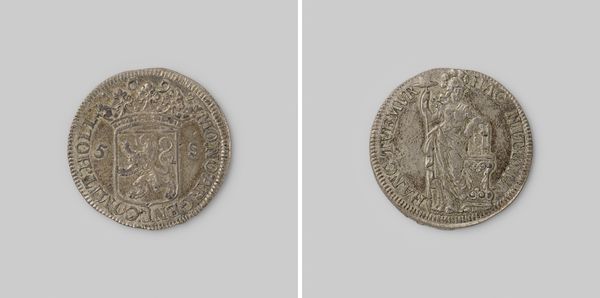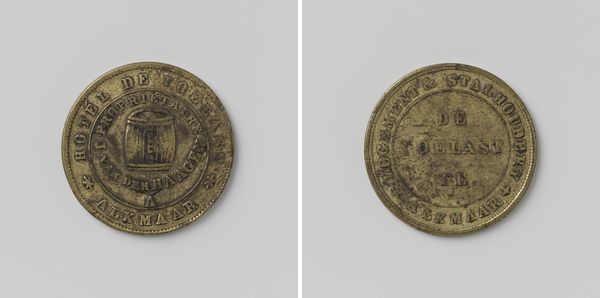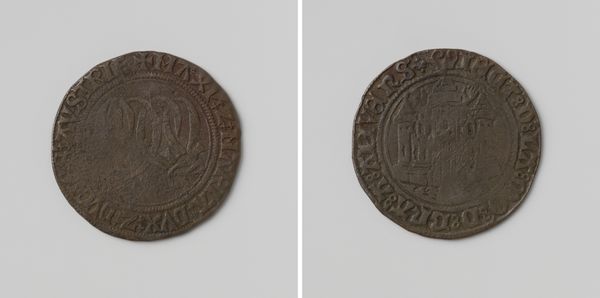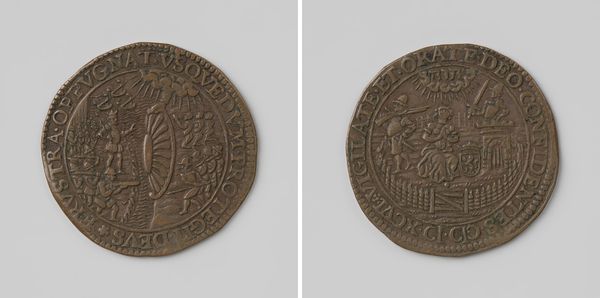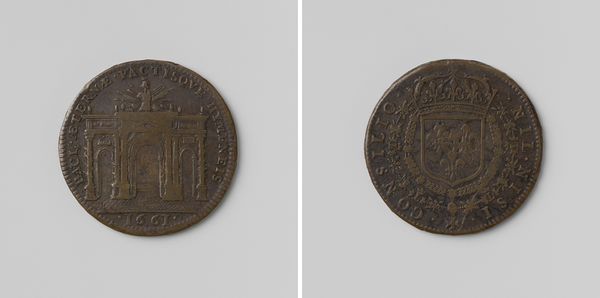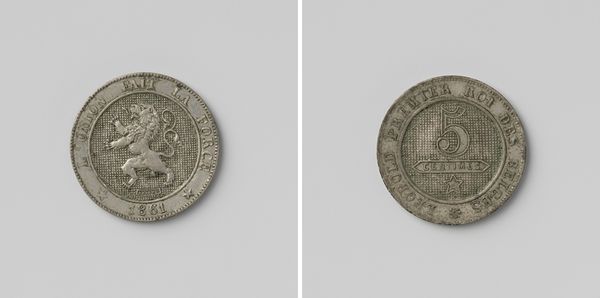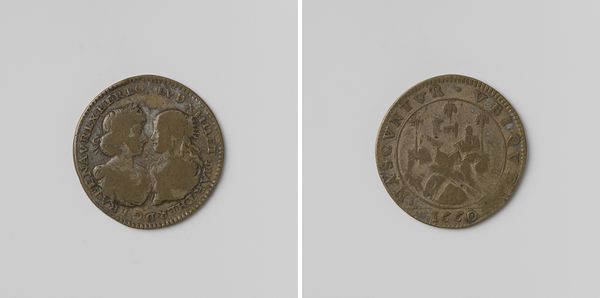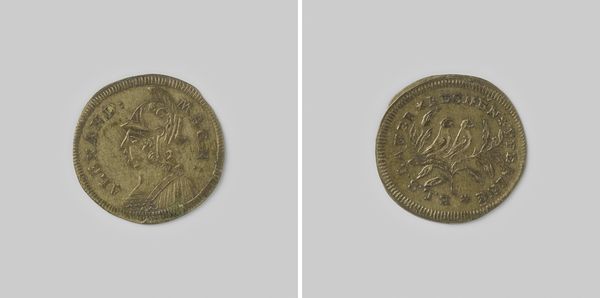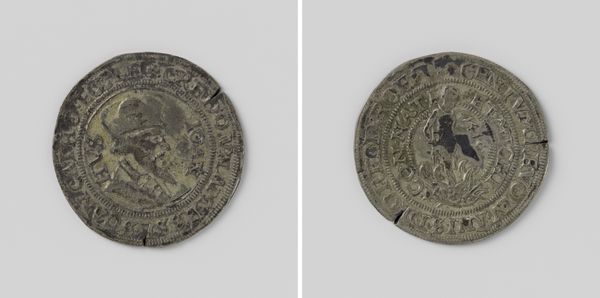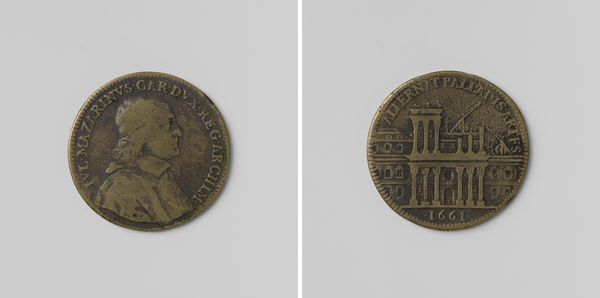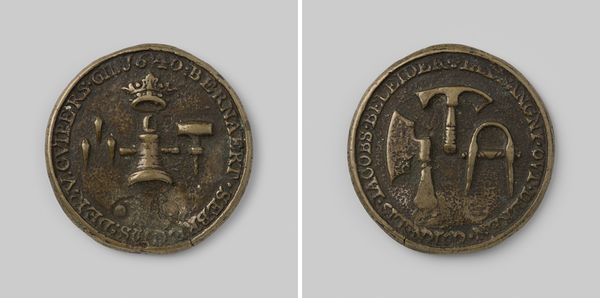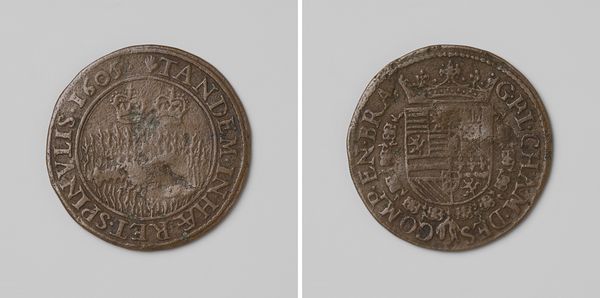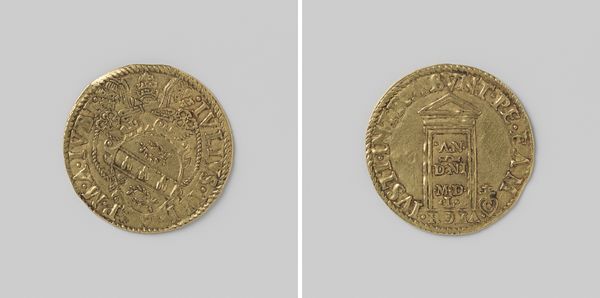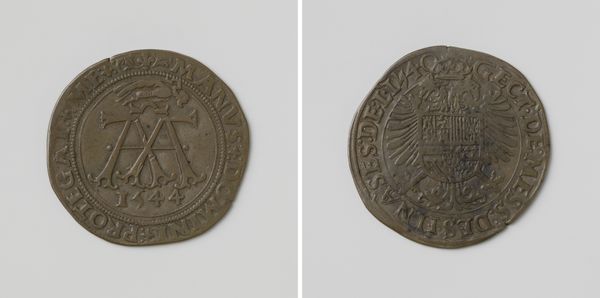
metal
#
portrait
#
baroque
#
metal
#
history-painting
Dimensions: diameter 2.0 cm, weight 1.07 gr
Copyright: Rijks Museum: Open Domain
This is a Nuremberg jeton, or rekenpenning, likely made in the early 18th century by Johann Jakob Dietzel. These tokens, though coin-like in appearance, were not used as currency. Rather, they were counters used on counting boards, a common calculating tool before widespread numeracy and affordable paper. Produced in present-day Germany, this jeton features George I of England. This reflects Nuremberg's dominance in jeton production and their export across Europe. The imagery on jetons like these offers insights into the values, knowledge, and power structures of the time. The portrait of King George, for example, legitimizes his rule through recognizable imagery. The coat-of-arms visually signifies the monarch's dynastic claim to power. By examining the circulation of jetons and their iconography, we can better understand the economic and political networks of early modern Europe. Resources such as trade records, family archives, and museum collections can shed light on the social life of these objects. The meaning of this jeton resides not only in its design but in the historical context of its production and use.
Comments
No comments
Be the first to comment and join the conversation on the ultimate creative platform.
